Asiatic Dayflower
Asiatic Dayflower
Commelina communis L.
Commelinaceae (Spiderwort Family)

▲ ▼ large colony in a flower bed in Illinois

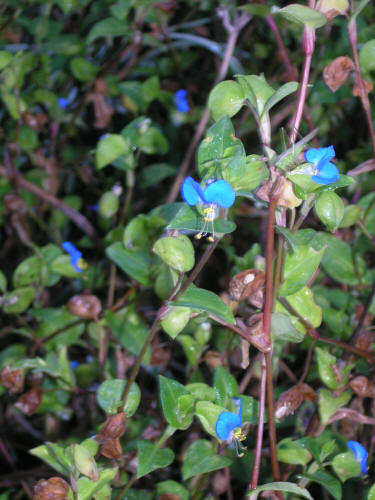
▲ ▼ flowers and stems
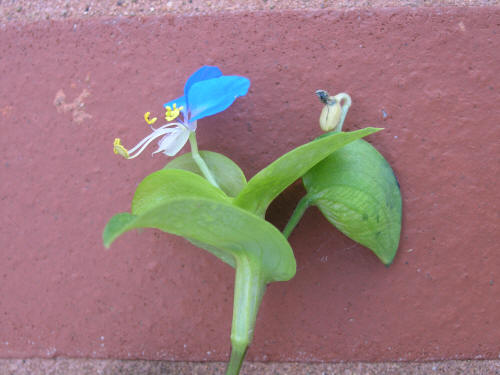

▲ flower showing spathe open on both sides
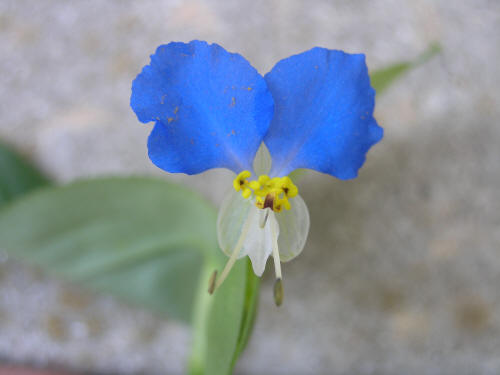
▲ flower detail, showing 3 petals

▲ ▼ leaves and flowering stems on a colony in Missouri
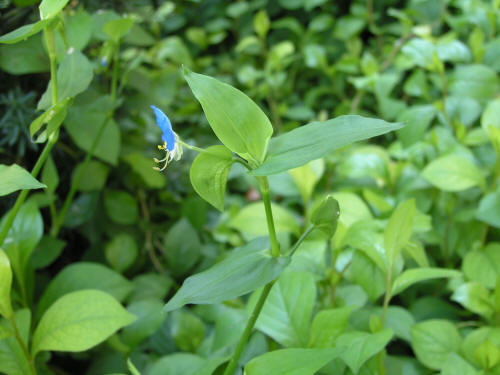
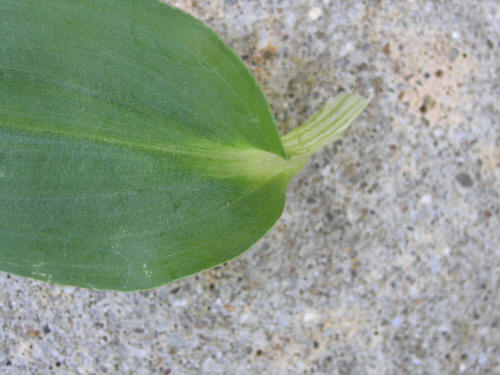
▲ ▼ leaf collar region, showing a few short hairs
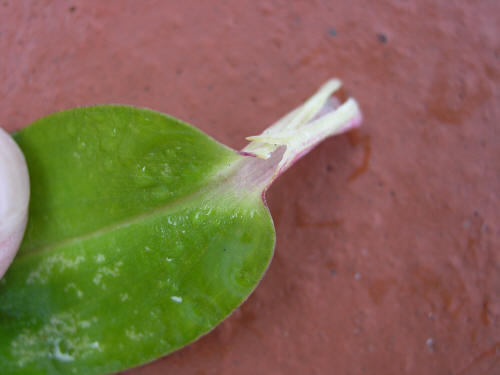
Dayflowers:
- Several species present in Missouri, some are summer annuals, but some species are perennial here, with creeping roots and stems rooting at the nodes
- Are monocots in the Spiderwort (Commelinaceae) Family
- All have light-green to dark green, alternate, oval-pointed leaves with parallel veins (is a monocot) in the Spiderwort (Commelinaceae) Family
- All have small, blue flowers that have two deep blue upper petals (and sometimes one much-smaller white lower petal); flowers are in little boat-shaped spathes (sepal-like structures) in the axils of the leaves
- Can reproduce by seed and vegetative means--cut stems can root readily in moist ground
- Prefers moist, fertile soil--gardens, cultivated fields--but also will grow on roadsides, non-crop areas
- Has a sprawling growth habit--long stems can create a tangled web in gardens, flower beds
- Is related to several houseplant species--wandering jew, inch plant--and the native perennial spiderwort
Asiatic Dayflower:
- An annual weed, invasive in summer annual crops, native to Asia
- Can have upright or sprawling stems, and may have rough white hairs on leaf surfaces
- On this species, there are 3 petals (two upper, large, blue; one lower, very small, white); creeping or spreading dayflower lacks the lower white petal
- The boat-shaped spathes are open on both ends (not closed on one end)--sort of like a taco; erect dayflower spathes are closed on the side toward the stem
- The inner part of the leaf sheath where it joins the stem is somewhat hairy